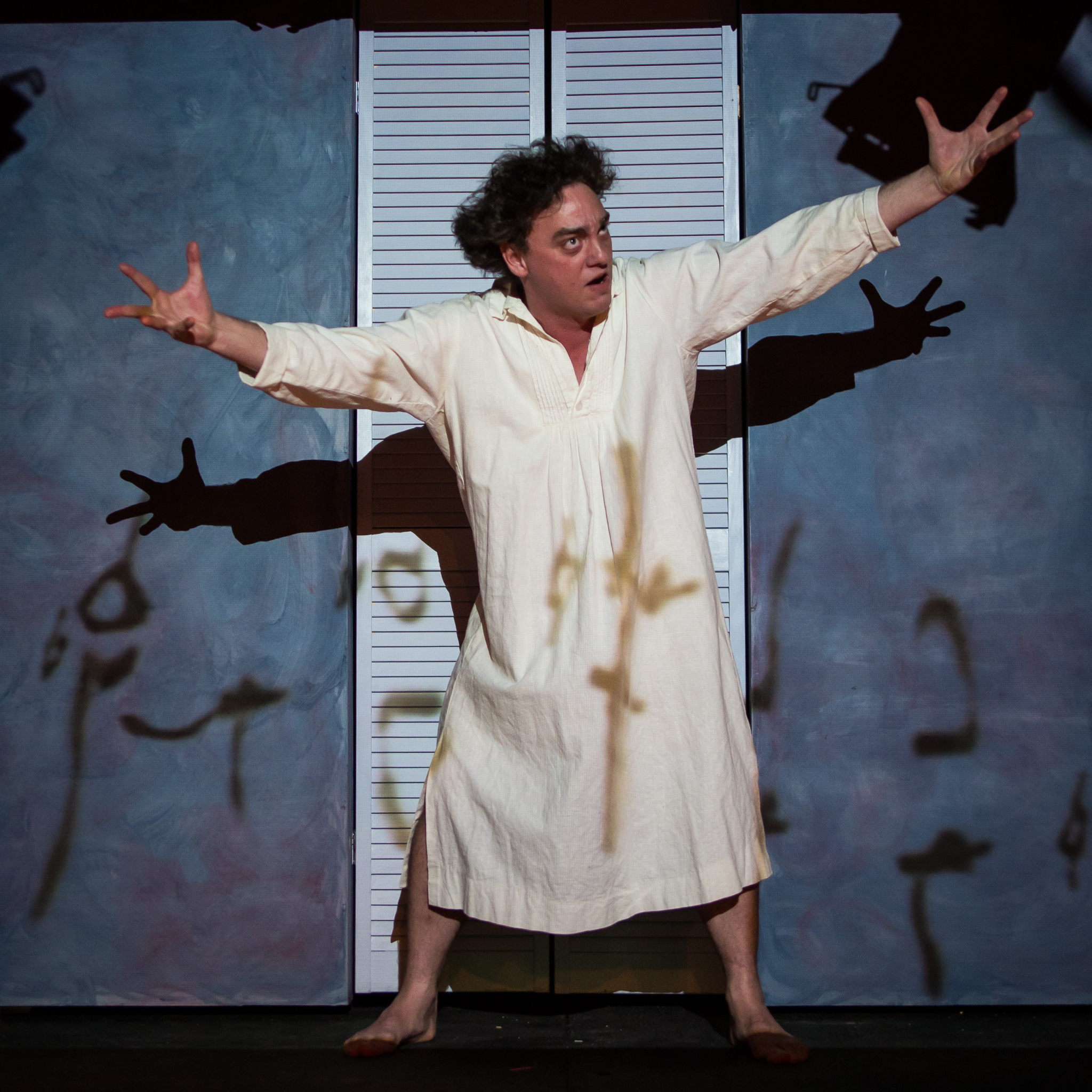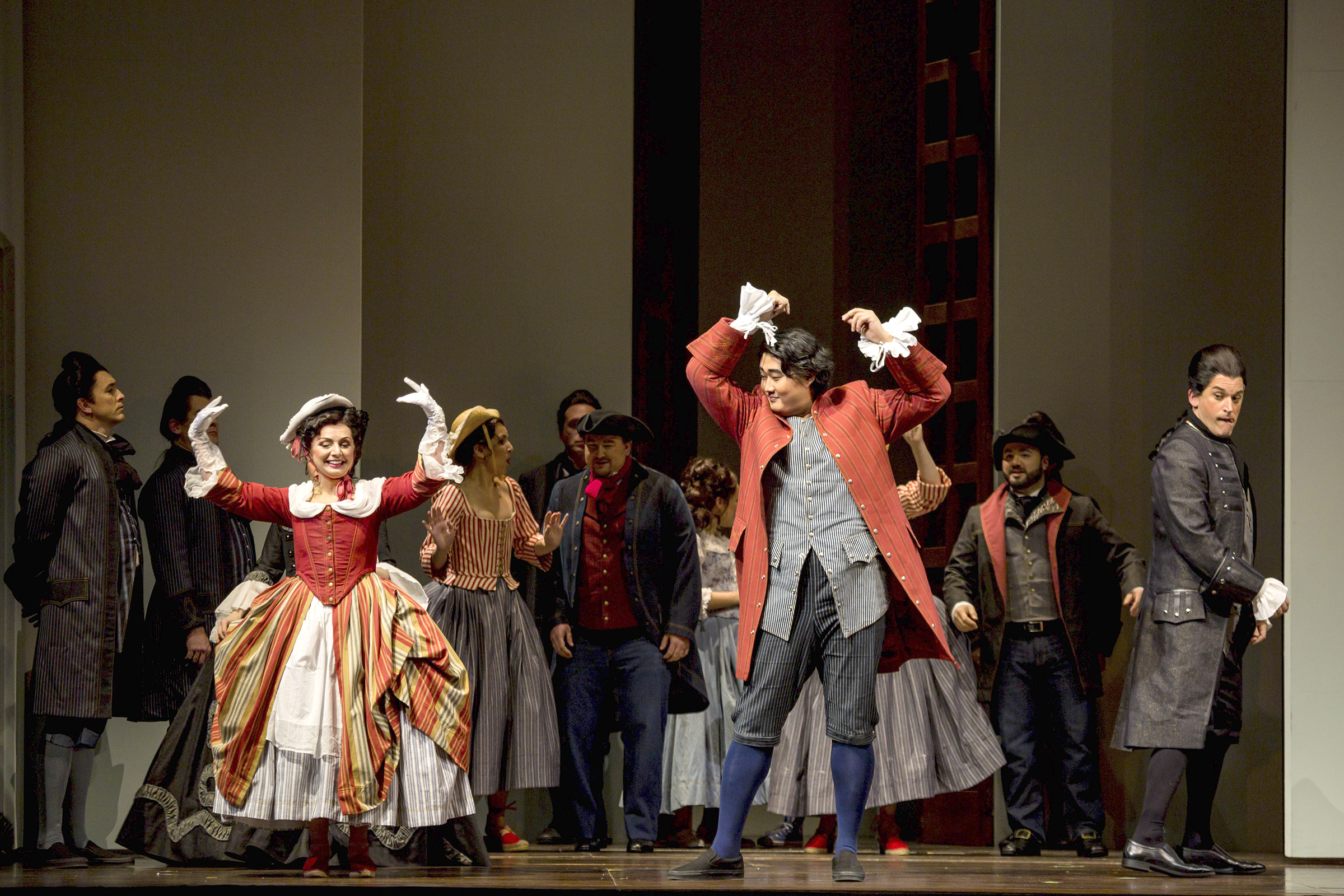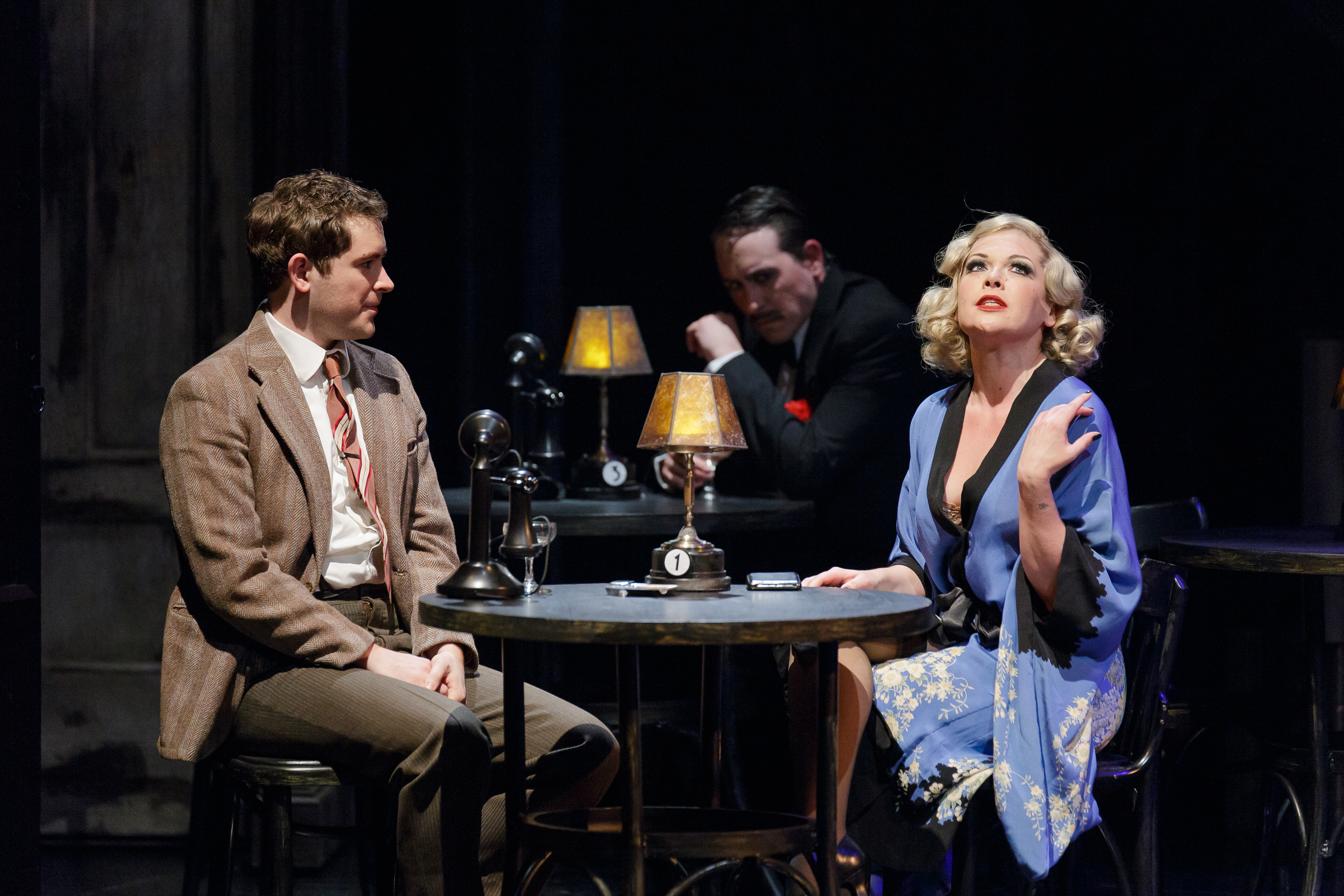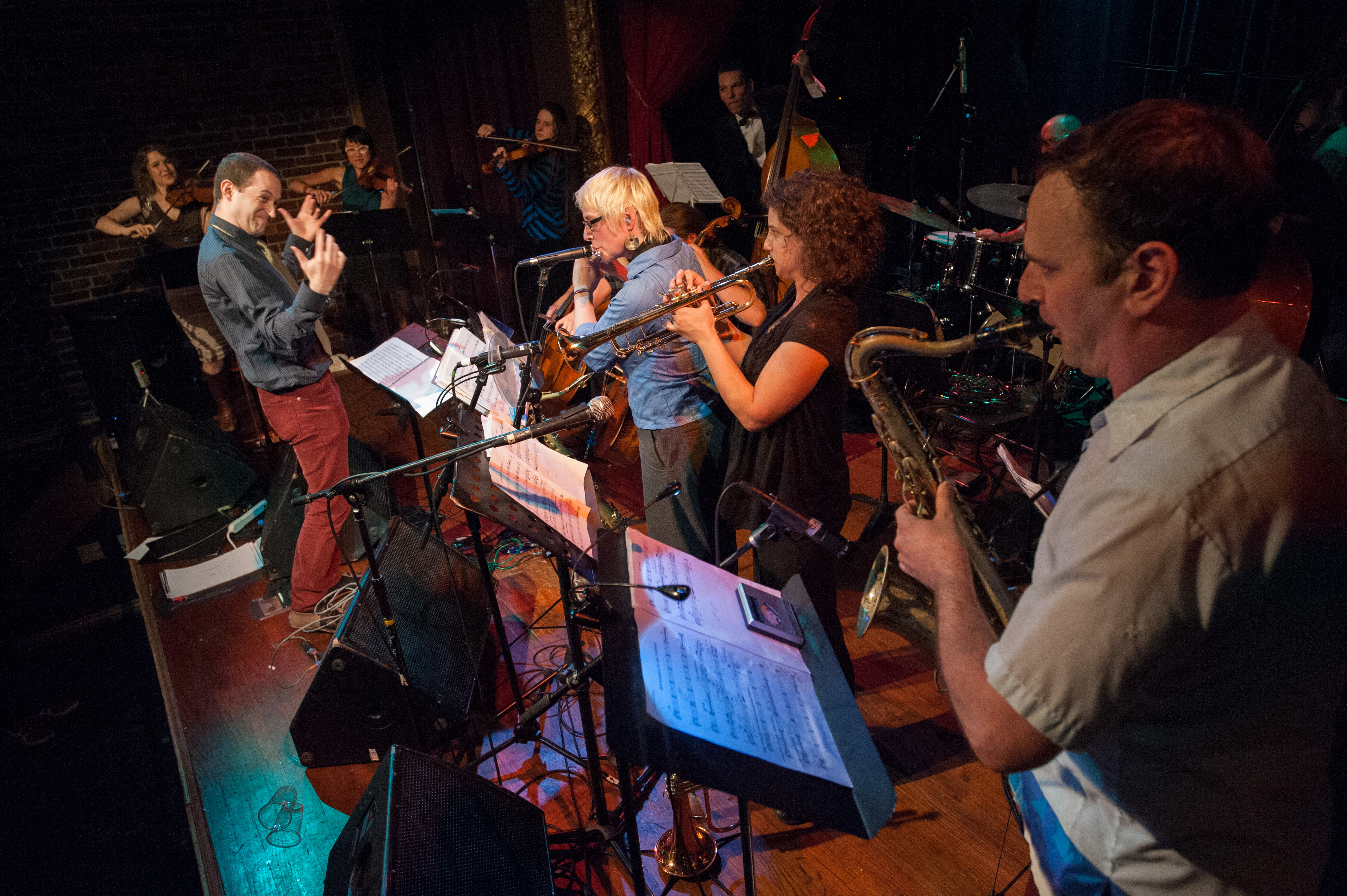“More than any other breed of human being,”
The New Yorker’s Anthony Lane once posited, “composers have suffered at the hands of cinema.” The history of attempts to render them on stage or screen—at even the most elementary level of veracity, never mind conveying what it’s actually like to be one—is a parade of forehead-slapping camp, gorge-rising sentimentality, and blatant invention. Even Peter Shaffer had to resurrect the hoariest of legends to provide a climax for his Amadeus. Lane was referring to the oeuvre of Ken Russell; but to be fair, Roger Daltrey’s portrayal of Franz Liszt is really not much more ridiculous than Dirk Bogarde’s in Song Without End. Yes, we’re talking about a film genre in which Lisztomania is not the most embarrassing example.
Whether the composer is real or fictional makes no difference; your eyeballs will ache equally from rolling at Hugh Grant’s waxen Chopin in Impromptu or the pious dopiness of Mr. Holland’s Opus. For me, the peak of bathos—though I haven’t had the opportunity to enjoy Florence Henderson as Mrs. Edvard Grieg in Song of Norway—comes in Jacques Demy’s 1967 musical Les demoiselles de Rochefort, in which two lines from Francoise Dorleac exemplify what makers of drama have done to makers of music. Rifling through her bag in search of a lost manuscript, she asks, “Where is my concerto? It was here in my briefcase, between my lipstick and my glasses case!”
Then again, composers as composers provide next to nothing for dramatists to work with. Anything you can render in a script, no matter how compelling, bears only scant connection to the reasons we value them. Mozart and Wagner battled career roadblocks; Beethoven and Schubert struggled with their health; Tchaikovsky and Shostakovich grappled with societal and personal demons—and so do the checkers at Safeway. Discussing any of these other issues makes the actual writing of music irrelevant. What do composers actually do? They think about sounds, then they record their thoughts—scratching a quill pen on staff paper, laying down an electronic track. That’s pretty much it. The process seems undramatizable.
Or is it? Moises
Kaufman’s 33 Variations, running now at ArtsWest under the direction of Christopher Zinovitch, comes unprecedentedly close. His time-traveling play tells parallel stories: Beethoven’s work, from 1819 to 1823, on his epic “Diabelli” Variations for piano; and a contemporary musicologist’s work on a book about them. Both face illness that threatens their projects. The piece’s nickname comes from Anton Diabelli (James Lyle), the publisher/composer whose brief waltz Beethoven used as the basis for his variations. I’m glad Kaufman spoke up for Diabelli’s tune; through the centuries, it’s gotten little respect. Yet Beethoven saw what could be done with it—a realization the playwright turns into a plot point. It’s sufficiently catchy and simple to bear embellishment yet remain recognizable in its large-scale structure and in its details: hooks, if you will, pregnant musical ideas Beethoven extracted and elaborated upon.
This elaboration provides the play’s most absorbing scenes: Kaufman’s effort to really dig into a music-making head. With the help of projected scores and an onstage pianist (Katie Koch, kept as busy as any actor), Kaufman explicates Beethoven’s thoughts on two planes: the variations’ derivation from the theme; and the development of ideas in Beethoven’s sketches from initial brainstorm to final polishing—all done, I should add, without theory jargon and in terms anyone can not only understand, but get caught up in.
It’s fascinating, yet it’s an aside; 33 Variations belongs to the musicologist whose physical breakdown Jody McCoy plays bravely and movingly. What of Beethoven himself? We’re back in Ken Russell territory. As Matthew Gilbert renders him, he’s a little bit Tom Hulce’s feverish Mozart at the end of Amadeus, a little bit Marty Feldman’s nutball Igor in Young Frankenstein, and the rest feral pit bull. Fully committed to his histrionics, Gilbert gives a courageously preposterous performance: bellowing, snapping, lurching around the stage in his nightshirt, conducting manically to the music in his head. It was difficult during this scene not to think of Elmer Fudd on the mountaintop raising the storm at the end of “What’s Opera, Doc?” (“Nowth wind bwow!!! South wind bwow!!!”).
Itamar Moses takes a wholly different approach in
Bach at Leipzig (now playing at Taproot), his imaginative fantasia on a music-historical anecdote. Though Bach’s career as a church musician peaked in the prestigious post of organist/composer for the Thomaskirche in Leipzig, he was in truth the third choice for the job. Building a farce out of this irony, Moses introduces us to six of the auditioners, who’ve descended on Leipzig in 1722 to threaten, bribe, and blackmail their way into the job. The names Fasch and Graupner still pop up on baroque-music programs now and then; the other four—Schott, Lenck, Kaufmann, and Steindorff—are remembered only for this tenuous Bach connection. With no pretense of verisimilitude, Moses’ method is snappily anachronistic screwball wordplay—for instance, when Lenck describes being waylaid by a highwayman:
Lenck: He tried to steal my luggage.
Fasch: It must have been dreadful.
Lenck: No, it is very attractive, which is no doubt why he wished to steal it.
I admit I can’t get enough of this sort of silliness, especially when spoken by po-faced men in powdered wigs, and Moses provides plenty of it in a script that nevertheless touches on big issues: free will vs. predestination, innovation vs. tradition.
Bach at Leipzig’s considerable charm is not that Moses makes his characters behave recognizably like composers (professional jealousy? Unthinkable!), but that he makes them behave like music itself. Parallels between Moses’ juggling of verbal ideas and Bach’s juggling of musical ones are easy to draw; cross-references and repetitions abound, and Moses opens Act 2 with a tour de force in which the characters mime a precis of Act 1 to illustrate Fasch’s description of the workings of a fugue. Deliciously acted and expertly paced in Taproot’s production (directed by Karen Lund), Moses’ mix of zaniness and braininess will, for once, not make classical musicians avert their eyes.
gborchert@seattleweekly.com







